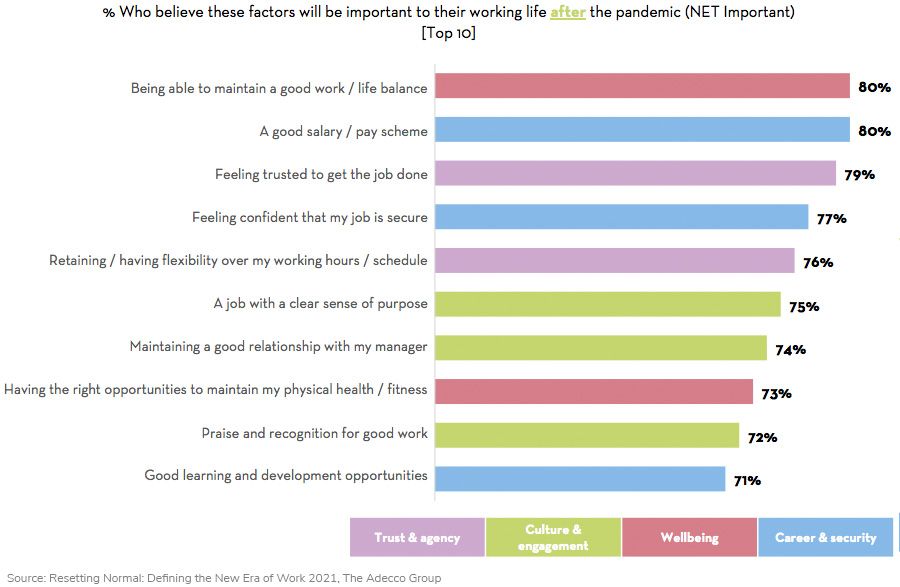The last several months have seen a sharp spike in resignations in Australia and around the world. It’s being widely called ‘The Great Resignation’. Shirli Kirschner, co-founder of HR software company Elker, explains why The Great Resignation is happening, and what employers can do to stop it from impacting their business.
A survey of 25 countries by HR technology company The Adecco Group found Australian workers to be the most burnt out in the world, with around 50% having had to take leave for their mental health. Employers are facing an uphill battle to retain their people because of these figures. Concurrently, resignation rates are highest among mid-career employees.
A survey conducted by the Harvard Business Review found employees between 30 and 45 years old have had the greatest increase in resignation rates, with an average increase of more than 20% between 2020 and 2021.

Research by PwC and Deloitte revealed ‘restlessness’ and a demand for flexible working arrangements causing employees to seek out new positions, and projecting 40% of workers planning to change jobs in the next 12 months.
The shift to remote working is also a factor; employers are feeling that hiring people with little experience is riskier than usual since new employees don’t benefit from in-person training and guidance. Harvard Business Review also reported the possibility of many employees delaying transitioning out of their roles due to the uncertainty caused by the pandemic.
It’s understandable that many may have reached their breaking point after long periods of high workloads, amid a general sense of uncertainty. The Harvard Business Review survey also found resignations highest in the tech and healthcare industries.

Resignations in tech increased by 4.5%; and 3.6% more healthcare employees quit their jobs than in the previous year. These fields had experienced extreme increases in pandemic-driven demand, subsequently leading to increases in workloads and burnout.
Why are people leaving?
It’s important that we determine why people are leaving, and what can be done to prevent it. What could be driving higher resignation rates? Is it salary? Too much time between promotions? The size of pay increases? Training opportunities? Knowing what the problems are can help you stem the tide. But getting the information out – information that could be hard for an employee to voice, and perhaps even harder for an employer to hear – can prove a challenge.
Staff frequently choose to leave based on how they’ve been treated over the past few challenging years. Those who stayed put were at companies where support, understanding and open communication were in place. Many companies which didn’t do this and bled staff were the ones that doubled down on bad staffing decisions including the likes of widespread layoffs.

Staff were made ill-at-ease by such choices, which left them feeling worse about their workplace and were, therefore, less likely to stick around.
Employees reasonably expect their employers to act on their concerns, or at least have a means by which they can have their concerns heard. Companies which fail to do that are doomed to suffer high attrition rates among their staff. It’s a short road from a once-prosperous organisation to be one known for its toxic workplace culture.
Knowing what the problems are in your organisation can help you prevent your company from contributing to these ‘Great Resignation’ statistics. Through identifying areas that the business could use improvement, eradicating certain problems and building a better workplace culture will do wonders for your business and create a more amiable, professional and pleasant workplace culture.

By identifying the root causes that lead to staff turnover, you can address the specific issues that your workplace might be struggling with.
Volumes of staff turnover cost businesses and companies greatly, which also leads to lost productivity. Onboarding new staff to the point of being fully effective will take from six to nine months, so it stands to reason that the companies that lose substantial figures in their workforce will struggle in the future.
Companies that don’t invest in their people, listen to them and have the plans and processes in place to take action when they raise their concerns will lose their most valuable resource, and are guaranteed to fall behind.
"avoid it" - Google News
November 29, 2021 at 01:11AM
https://ift.tt/3E1T4KL
The Great Resignation: what is it and how can employers avoid it - Consultancy.com.au
"avoid it" - Google News
https://ift.tt/3844a1y
https://ift.tt/2SzWv5y

No comments:
Post a Comment